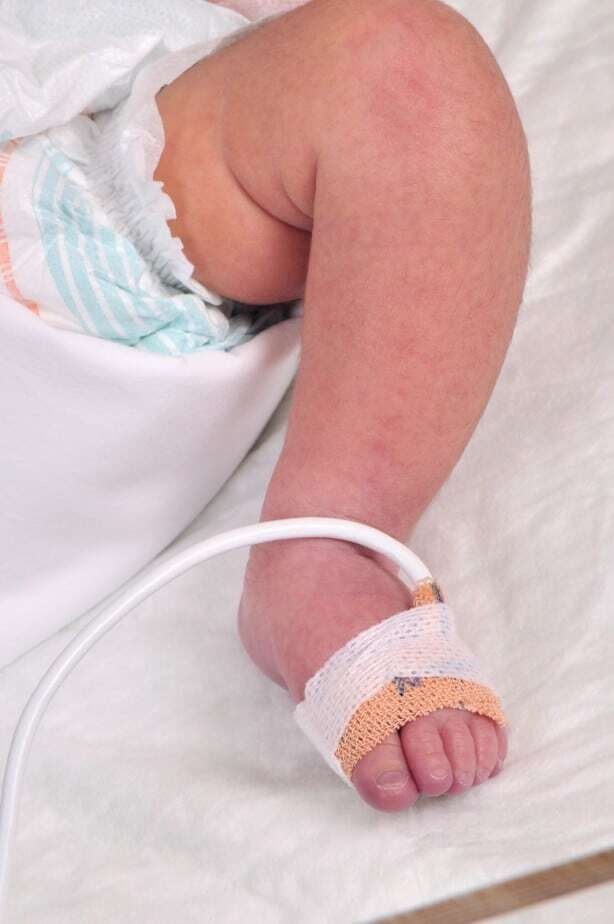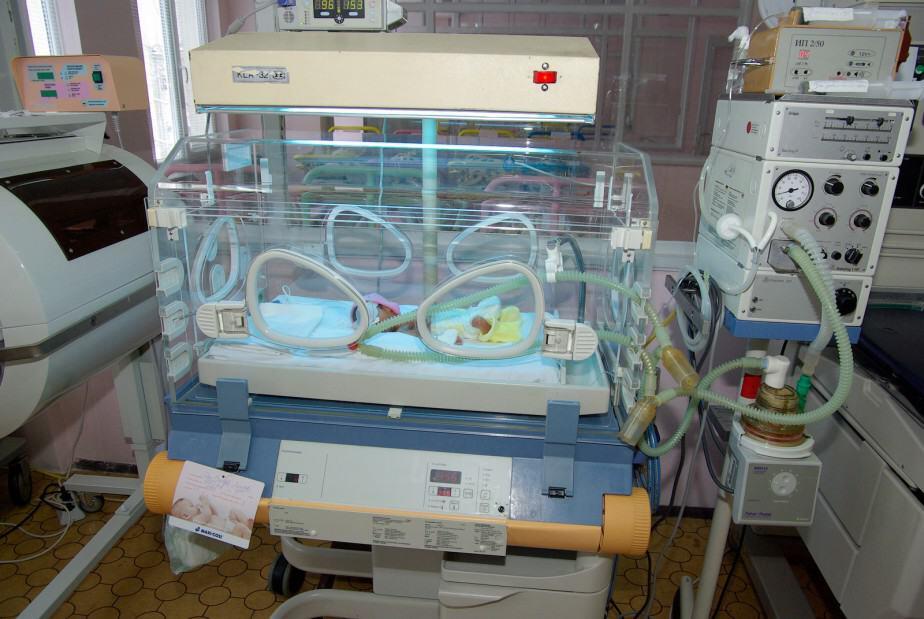Many babies who were born as extremely premature babies or micro-preemies develop bronchopulmonary dysplasia during their hospitalization in NICU. As a neonatologist, I find myself explaining this condition to parents quite often and see that family members of our little patients poorly understand it. Thus, I decided to dedicate the whole article to the subject of bronchopulmonary dysplasia.
If you have a premature baby born before 32 weeks receiving treatment in the NICU right now, I encourage you to explore also my book “Babies Born Early“
Definition of BPD and background information
Definition of Bronchopulmonary Dysplasia (BPD)
Bronchopulmonary dysplasia (BPD) is a pulmonary condition that develops in babies born at less than 32 weeks but mostly in those below 28 weeks of gestational age at birth. Due to the disruption of proper growth and development of the baby’s lungs, babies develop chronic dependence on oxygen even after overcoming the acute phase of respiratory distress after birth.
Some doctors and parents use another term to describe this condition: Chronic Lung Disease or CLD.
Newborns affected by BPD will need supplementary oxygen to breathe for many weeks, months, and sometimes even for more than a year after birth. There are numerous scientific definitions of BPD used by researchers. However, the simplest one is the need for additional oxygen to breathe at 28 days of life and/or at a corrected age of 36 weeks after birth.
The most significant factor contributing to the incidence of BPD is gestational age at birth (the lower gestational age at birth, the higher the frequency of BPD). Still, other factors such as types of required treatments or genetic factors probably play a role as well.
How common is Bronchopulmonary Dysplasia?
I encourage you to analyze the results presented to you in Table 1, where I showed the frequency of BPD depending on gestational age at birth.
Table 1: Incidence of BPD based on gestational age at birth. Mild BPD means the need for supplementary oxygen at 36 weeks of corrected age. Severe BPD means the need for treatment with more than 30% oxygen and CPAP device or Mechanical Ventilation. (Modified from data provided by NICHD network and published in Pediatrics 2010)
| Gestational Age at Birth | Mild BPD | Severe BPD |
|---|---|---|
| 23 weeks fo GA | 73% | 40% |
| 24 weeks of GA | 70% | 37% |
| 25 Weeks of GA | 56% | 25% |
| 26 weeks of GA | 45% | 18% |
| 27 weeks of GA | 35% | 15% |
| 28 weeks of GA | 24% | 8% |
Just by glancing at the table, it is evident that BPD, both mild and severe forms are more common among the most premature babies, such as micro-preemies (born at less than 26 weeks of GA). While among babies born at 24 weeks, 37% will have severe BPD, and 70% will have mild BPD; among 28 weekers, only 8% will have severe BPD and 24% mild BPD.
Risk factors for Bronchopulmonary dysplasia
- Prematurity – I have presented data above in Table 1 to show how lower gestational age at birth is associated with the higher frequency of BPD in newborn babies.
- The small size of the baby at birth (Babies who are born small comparing to their peers are often called SGA or IUGR – see my article for more information on those terms). One study showed that smaller babies have a doubled risk of developing BPD comparing to their normally grown peers (Source).
- Mother with a history of smoking cigarettes. There was a small study published that found almost doubled risk of BPD for babies of mothers who smoked cigarettes.
- The need for mechanical ventilation beyond seven days of life (baby receiving respiratory support on a breathing machine – ventilator). There is no doubt among the neonatologists treating newborn babies in NICUs that prolonged use of mechanical ventilation is associated with a higher frequency of BPD. However, we still do not know for sure if this is only an association, or there is a cause-effect relationship. We continue debating what kind of respiratory support is best for babies so we can minimize damage to the lungs and prevent the development of BPD. At this time, it appears that it is beneficial for babies to avoid mechanical ventilation if possible and use CPAP respiratory support instead. If mechanical ventilation is necessary, some doctors advocate using volume-controlled ventilation rather than pressure controlled ones (currently used ventilators in NICUs have the ability to control both parameters if needed).
- The need for supplementary oxygen after 14 days of life. We know that high concentrations of oxygen are damaging to the lungs. Unfortunately, it may be hard to avoid giving baby supplementary oxygen after birth if the baby is born with severe acute respiratory distress due to premature lungs. Also, we do not know precisely what concentrations and what duration of treatment with oxygen are harmful to babies.
- Patent Ductus Arteriosus (PDA). Ductus arteriosus is a vessel that, in fetal life, connects two large arteries that come out of the heart: aorta and pulmonary artery. After birth, in term babies, ductus arteriosus closes on its own and does not allow blood flow between those two arteries. However, in premature babies, especially the youngest ones, ductus arteriosus sometimes does not close and may contribute to the development of Bronchopulmonary Dysplasia. Many doctors have conflicting opinions on the role of ductus arteriosus and whether it should be closed medically or surgically in sick babies.
- Inflammation. Some studies are saying that chorioamnionitis (infection of the amniotic sack prior to delivery of the baby) may be increasing the risks of developing BPD in the baby.
- Infections after birth. Some tiny babies develop numerous infections during their stay in NICU. We observed that those babies also have higher risks of developing BPD before discharge from the NICU.
- Genetic factors. It is plausible that genetic factors make some babies more prone to developing BPD. Studies on this subject are on-going.
Clinical features of BPD
The main clinical feature of Broncho Pulmonary Dysplasia is the need for supplementary oxygen in a baby at 36 weeks of corrected gestational age. On physical examination, many babies will present with faster than normal respiratory rate (tachypnea) and increased work of breathing as manifested by the presence of retractions. Baby has retractions if we observe sinking chest movements in the area of the lower ribs while the baby is inhaling the air (during inspiration).
Depending on the severity of BPD, in addition to supplementary oxygen, the baby may need to be placed on a ventilator, CPAP device, or nasal cannula. (I explained these types of respiratory support in my article here).
If we check the baby’s blood and measure the amount of oxygen and carbon dioxide, we will often find a lower level of oxygen and an increased level of carbon dioxide.
In cases where the baby needs only a small amount of extra oxygen to breathe, we can conduct a test that is called Physiologic Room Air Trial.
During the trial, we will turn down oxygen to 21%, which is an amount ordinarily present in room air and follow the baby’s oxygen saturation (Oxygen saturation is a percentage of hemoglobin bound to the oxygen. It can be measured easily using a monitor). If oxygen saturation remains above 90% for at least 1 hour, the baby passed the test, and it means that probably this baby does not need supplementary oxygen and does not meet the criteria for the diagnosis of BPD.
If on room air, oxygen saturation drops below 90%, the baby should be treated with oxygen and most likely has BPD. Obviously, one should consider other clinical conditions that can also present with low blood oxygen levels.

Oxygen saturation probe attached to baby’s foot
Management and treatment of Bronchopulmonary Dysplasia
Most patients affected by BPD gradually improve over time. Physiologic healing processes take place as the baby is gaining weight and growing. Treatment of BPD should focus on three areas: supporting growth, supporting work of breathing and providing oxygen if needed, and diagnosing complications.
Supporting growth of the baby.
I always say to parents that the best treatment for BPD is making sure that the baby is gaining weight well. To achieve optimal weight gain while limiting an excessive amount of fluid volume, we have to utilize high caloric density formulas or fortify breast milk that the mother provides for her baby.
Pediatric dieticians can advise us on adding certain additives to the baby’s diet. They will also set goals for ideal weight gain in the baby (usually 20-30 grams per day). We do not want to achieve large weight gain quickly because that will be due to fluid overload and may worsen BPD and increase oxygen requirements.
Medical treatment of BPD
There are several medicines that neonatologists tend to use for the treatment of BPD. However, there are many conflicting opinions about their utility. Many in the medical community argue that the medicines used for BPD were not adequately studied and were not proved to work.
Still, due to a lack of better solutions, all neonatologists use at least some of them in their practice. I will describe those therapeutic options below without getting into controversial viewpoints.
- Diuretics (medicines increasing urine output). It is believed that an increased amount of retained fluid in the lungs may be contributing to BPD. Therefore diuretics may help in the absorption and excretion of the fluid from the lungs. Babies placed on diuretics may develop electrolyte abnormalities and may have problems with weight gain. It is crucial to monitor various metabolic parameters while we treat a patient with diuretics.
- Caffeine. It is a medication used to treat Apnea of Prematurity by increasing respiratory drive. It also has diuretic effects; therefore, it may help in BPD.
- Inhaled corticosteroids. Steroids decrease inflammation in the lungs. Since lung inflammation is a contributing mechanism to the severity of BPD, some believe that inhaled steroids may help in its treatment.
- Orally or intravenously administered steroids (also called systemic steroids). We do know that systemic steroids may facilitate the resolution of BPD and faster weaning off the ventilator and oxygen. However, due to the likely adverse effects of systemic steroids on the central nervous system leading to cerebral palsy, we have to use systemic steroids very judiciously.
- Inhaled bronchodilators (medicines used in older patients to treat asthma). Some newborns develop lung inflammation and wheezing due to spasm of muscles located in lower airways (bronchioles). A similar situation occurs in older patients diagnosed with asthma. Whenever we suspect such bronchospasm in a baby, we can try inhaled bronchodilators and watch if the baby reacts positively to such a trial.
Supporting respiratory efforts
Depending on the severity of Bronchopulmonary dysplasia, the baby may need to be placed or continued on a ventilator, CPAP device, or Nasal Cannula.
A ventilator is a machine that provides artificial and external breaths for the baby by pushing air under pressure through the tube placed in the baby’s windpipe. Computer software coordinates external breaths with the baby’s own breathing efforts.
A CPAP device provides a continuous flow of air with extra pressure, particularly during the expiratory phase of the baby’s breaths. The primary role of this technique is to support the baby during expirations and prevent the lowest airways and alveoli from collapsing. The alveoli are the tinnies airspaces in the lungs where gas exchange takes place.
A Nasal Cannula is a small, soft, and flexible plastic tube placed in the baby’s nose that provides a flow of air with oxygen.
All three types of respiratory support described above can provide the desired amount of oxygen ranging from 21% up to 100% if needed.
The most advanced devices contain computer software continuously monitoring and adjusting oxygen supply to the baby’s changing needs without bedside nurse’s involvement. This technology is very new and not available in all NICUs yet.
Monitoring for and treating complications of BPD
Babies suffering from BPD may develop numerous complications; therefore, surveillance and treatment of those is crucial to facilitate the path to a speedy recovery and discharge from the NICU.
- Acquired infections. Any unexpected deterioration in clinical condition may be due to an infection. Performing bacterial, viral or fungal cultures and treating infections with antibiotics is often necessary.
- Air leaks (pneumothorax and pneumomediastinum). Sometimes a small portion of the lung may rupture due to air trapping and increased intrathoracic pressure. It will result in sudden deterioration of respiratory status and a significantly increased need for supplementary oxygen. Physical exam and chest x-ray will be diagnostic. The treatment of air leaks often involves the insertion of a needle or tube into the chest cavity to evacuate free air.
- Systemic high blood pressure. Up to 50% of babies with BPD will also suffer from high blood pressure and will require medications for it.
- Fluid overload. Some babies with chronic lung disease do not tolerate the normal volume of fluids and start gaining weight too rapidly with concomitant deterioration in their respiratory status. A chest x-ray will show retained fluid in their lungs, and as a result, they will need to be treated with fluid restriction and diuretics.
- Pulmonary hypertension and cor pulmonale. These two conditions are cardiologic conditions which may develop due to chronic lung disease in a baby. To diagnose it, we have to perform an ultrasound of the heart (Echo) and involve cardiologists’ help. The treatment of pulmonary hypertension is long and complicated but can be successful.
Outcomes – short and long term outcomes
Most newborns with BPD recover form it within 2-4 months after diagnosis was made. However, babies with severe chronic lung disease may need ventilatory support, and a high concentration of oxygen beyond six months of age.
Studies conducted on children of secondary and high school age with the diagnosis of BPD during their NICU stay showed persistent pulmonary function abnormalities. Even though they were not dependent on oxygen anymore, they still were showing more airway hyperactivity (asthma-like behavior) or hyperinflation during those tests (Source).
As expected, the most persistent pulmonary function abnormalities were found among survivors who had the most severe and prolonged forms of Bronchopulmonary Dysplasia.
How can we prevent BPD?
There are certain strategies that we can employ to prevent or mitigate the severity of Bronchopulmonary Dysplasia.
- Preventing premature labor. Providing appropriate prenatal care and treating women at risk may delay early labor, thus decrease the burden of prematurity.
- Treating women who are in premature labor with betamethasone IM injections may decrease the severity of initial respiratory disease in a baby, thus reducing the need for more invasive respiratory support such as mechanical ventilation.
- If a baby is on mechanical ventilation, using a more gentle form of ventilation such as volume-controlled mode may decrease the risk of BPD in a baby.
- Ensuring ideal nutrition from the very beginning after birth will facilitate the proper growth of the lungs and will allow physiologic healing mechanisms in the lungs to take place.
- Diligent surveillance for infections and prompt treatment will eliminate additional risks for BPD.
Questions to ask of your doctors if your baby has BPD
- How severe is Bronchopulmonary Dysplasia in my baby?
- What concentration of oxygen does my baby need? The decreasing level of oxygen will be an indicator of the lungs’ healing. Regular room air that we all breathe in contains 21% of oxygen.
- How do you plan to treat my baby’s chronic lung disease?
- Do you expect that my baby will need supplementary oxygen after discharge home?
- If I am willing to take my baby home on oxygen, will my baby go home sooner?
- Is there anything that I can do for my baby to facilitate earlier recovery and discharge home?
If you liked this article you may also be interested in reading my post about criteria for discharge home from the NICU.
Disclaimer:
This article is only for general information purposes. It should not be viewed as any medical advice. There is a chance that information here may be inaccurate. It would be best if you always discussed all health-related matters with your doctor before making any decisions that may affect your health or health of your family members.

